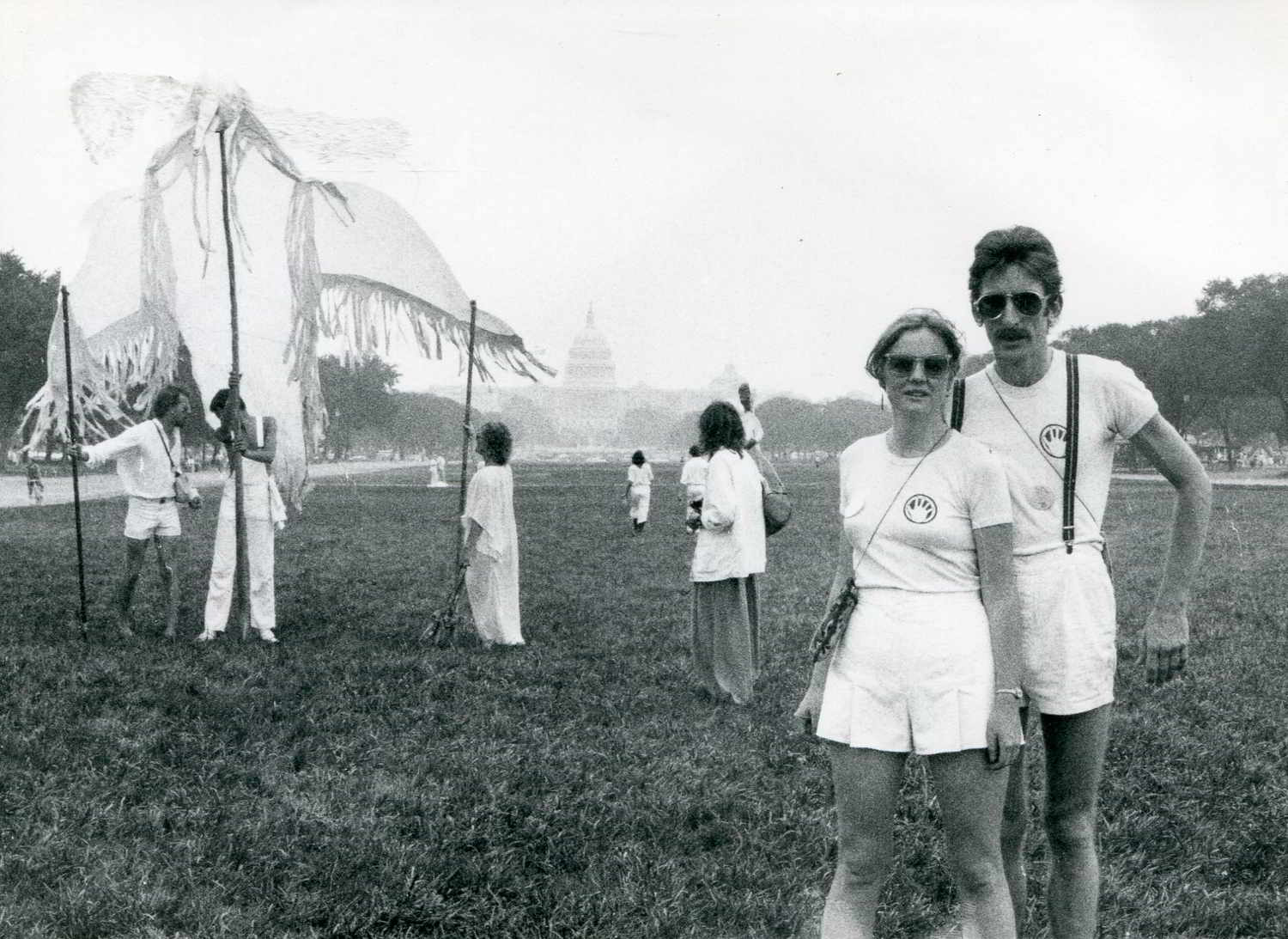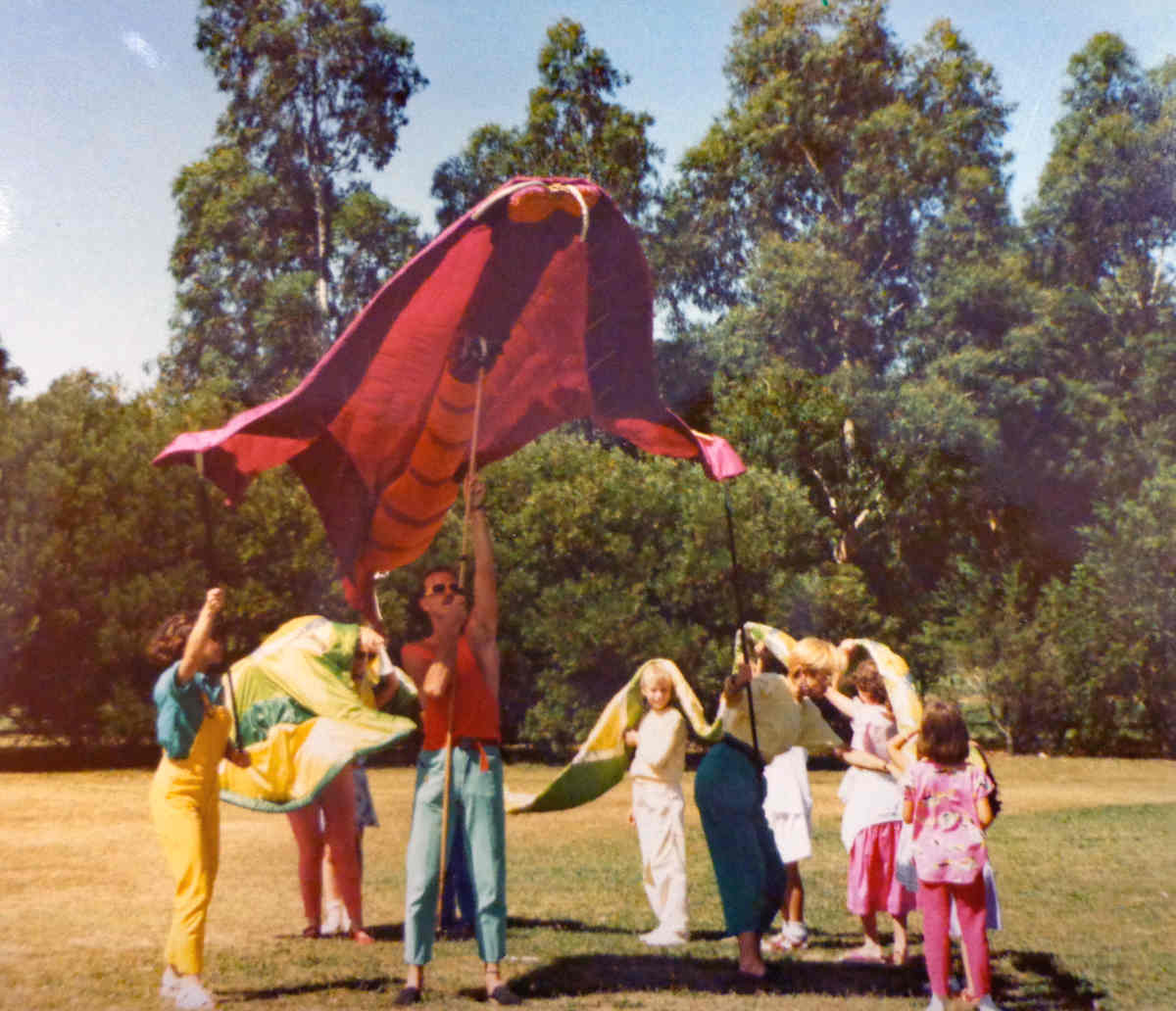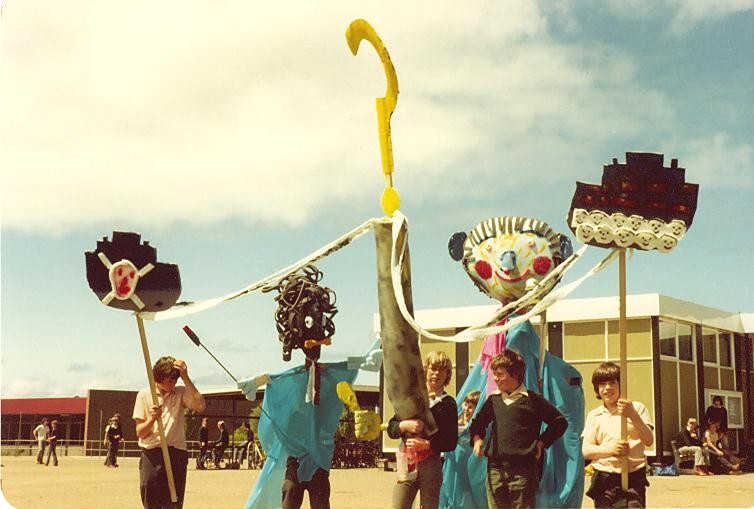HANDMADE was the term officially coined by Handspan in 1987 for its workshop outreach projects.
Spurred on by discussions at the National Puppetry Forum held in February 1986 in Marysville, Victoria, which had deplored the lack of training in puppetry and its principles, the company sought to formalise its puppetry workshop methodologies and their priority in annual programming activities, and appointed Andrew Hansen as Handmade Project Co-ordinator.
Nevertheless, workshops in puppetry for performance had been a key stream of Handspan’s work from the outset.
Puppet-making – where a puppet can be anything, from an animated ‘found object’ to a fully articulated and exquisitely crafted ‘character’ - is an accessible and engaging activity in itself. Handspan workshops however, aimed to make ‘puppets with a purpose’ and workshops, even short ones, were designed to culminate always in some kind of performance showcase.
The theories
Early Handspan workshops in schools and community venues were based on the drama-in-education principles of Dorothy Heathcote and Peter Slade . Their philosophies sought to offer students the opportunity to experiment and innovate and express themselves in performance. Puppetry is a great tool for such ambition – offering opportunities for boldness and reticence in equal part, and simple skills can be as effective as complex techniques.
Workshops were often preceded by a Handspan performance or at least a demonstration of the medium’s magic, but participants were actively discouraged from copying images or ideas. Simple techniques were explained, but puppet-making templates were anathema.
Anything can be a puppet was a motto that HANDMADE projects sought to pass on.
Handspan founders were all experienced in leading in-school workshops – it was part of the work of the Parry-Marshall Puppet Theatre where they had all trained. It was with Parry in fact that Handspan’s philosophy was galvanised. His workshops had become formulaic: there were too many replicas of demonstration puppets – 'Petunia' paper plates or Knights constructed from a cigarette packet! Puppet-making was no more than a craft activity, it missed the drama and the creative excitement. Handspan members had learnt what they didn't want to do. New and different workshop methodologies were developed as ardently and assiduously as new plays.
It was a time when Theatresports was becoming popular, when some Handspan artists were studying Le Coq improvisation, mime and mask work; reading Grotowski1 rather than Stanislavski2 ; dipping into psycho-drama theory; and devouring Victorian Association of Drama-in-Education (VADIE) journals. Workshops were a chance to explore and adapt theories and ideas. The work felt vital, and Handspan projects had vitality.
Handspan was part of Australia's Community Arts movement, that had emerged in the 1970s to encompass participatory arts practice that reflected the issues and stories of its creators. Company members participated in Bread and Puppet Theatre spectacles at international festivals, and found colleagues at Welfare State in the UK. Helen Rickards, as Executive Director of the company, was appointed to the then Community Arts Board of the Australia Council in 1983.
Community arts precepts were cornerstones of HANDMADE:
Community Arts ... an attitude to what the function of art is: seeing the legitimacy of art practice deriving from its emergence from the community.
Projects that were generated over time and involved Handspan artist-in-residencies in schools and communities produced spectacles and activities that expressed community concepts and ideas in puppetry-based visual imagery.
Workshop leadership was demanding. Developing improvised performance and play-making while simultaneously marshalling the troops, and solving the technical difficulties inherent in the making of several different puppets, was challenging. At the same time, it was incredibly rewarding – providing an environment of creative stimulation and invention that fed Handspan artists’ own practice and the company’s professional productions.
The Handbook
HANDMADE: The Manual was the title for the company’s workshop handbook published in November 1991.
The text was written by Lizz Talbot in consultation with Ken Evans and Andrew Hansen; it was illustrated with diagrams and drawing by Rob Matson and Mary Sutherland; and published by Handspan Theatre in November 1991.
The handbook was published to provide guidelines for Handspan's workshop programs including company theory and practice of puppetry as well as skills and techniques in making and performance. It remains a comprehensive guide to and overview of Handmade practice.
compiled as a resource for members and (with the caution that) regardless of the size of the project, success is guaranteed by a realistic consideration of what can be achieved in the given time.
HANDMADE projects encompassed:
- Flexible workshop programs accompanying school performances often a crucial requirement in Handspan’s early productions touring to schools: Hansel and Gretel (1978), The Apple Show (1979) and sometimes The Mouth Show (1978) and The Bunyip of Berkeley's Creek (1980). Mostly these workshop activities were 'add-ons', and too often a limited experience – too little time and too many participants. In later years, follow-up Teachers Notes and Q & A sessions commonly accompanied school performances, providing background to the show and its underlying issues and to prepare for follow-up workshop sessions.
- Community arts workshop residencies such as Rivercrafts (1978 & 1979); Back-to-Portland Celebrations and Inroads were highly successful and much more satisfying. Gulliver at Kealba (1979) was Handpsan's first Artist-in-Schools residency project and many others followed.
- Handspan's community collaboration program was formalised and led by Andrew Hansen From 1986 – 1990. His projects The Butterfly Project (1986); Snapshot (1986); and The Tomorrowland Game (1987) were highlights of this work. Others in the repertoire included Michele Spooner’s project with Mainstreet Theatre in Millicent, in regional South Australia (1989) ; and The Townsville Project (1990) led by Maeve Vella for which no photographs or documentation remain in the srchives.
- Puppetry training courses in Melbourne Higher Education institutions were developed based on HANDMADE principles. Occasional classes in puppetry performance and manipulation were held at Handspan's Gertrude St Sudio from time to time. Andrew Hansen established puppetry workshop units within the Small Theatre Production course at Swinburne University which was formalised and continued by Ken Evans from 1992. Through Swinburne projects, Handspan's collaborative street work, Held on the Breath of the Wind (1994), Enrapture, 1995 and Swim, 1996 were produced, and newly emerging puppeteers joined Handspan's Associate Membership in ensuing years. Some of the training in the Victorian College of the Arts Puppetry program established by Peter J.Wilson and Gilly Farrelly in 2004 also evolved from the HANDMADE philosophies.
HANDMADE productions had a ripple effect, and left an enduring legacy. Many former Handspan artists continue to work as artists-in-residency and workshop leaders to pass on the skills and techniques of the powerful artform that is puppetry and theatre of image.
Footnotes:
HandMade:
`




